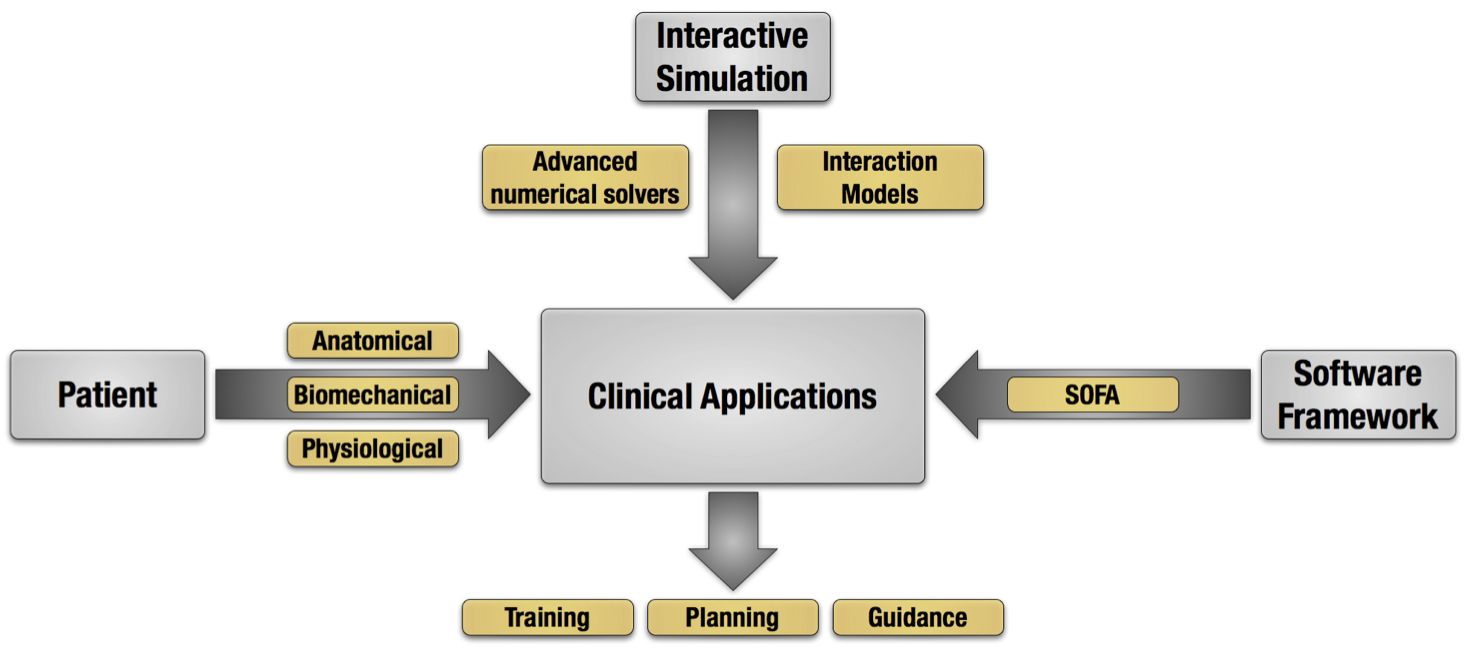Section: Overall Objectives
Team Overview
The medical field has been a domain of application for computer science for more than a decade, and several tools, such as image processing, are now an integral part of modern medicine. Large-scale projects such as the Virtual Physiological Human promoted by the European Commission or the Virtual Physiological Patient Project launched in 2012 by the FDA (US Food and Drug Administration) aim at providing comprehensive, virtual and validated computer models of human anatomy and pathologies. National initiatives such as the IHU in Strasbourg promote the use of computer simulation in a clinical context. We strongly believe that the (real-time) simulation of the behavior of anatomical structures can lead to a continuum of exciting possibilities, from advanced training systems, to planning and per-operative guidance through the combined use of patient-specific models and robotics. The SHACRA team was created in 2010 with primary objectives to address some of the key scientific problems of the multidisciplinary field of computer-based medical simulation, in particular patient-specific anatomical and biomechanical modeling, advanced numerical solvers, physiological modeling, and new interaction models. In parallel to these scientific objectives, we also proposed to focus on a number of applications, through close collaborations with clinicians. Our recent integration within the IHU1 in Strasbourg illustrates the relevance, and potential, of our research. To support these ambitious objectives, and allow us to develop prototypes that can be assessed by clinicians, we are leading a national initiative on medical simulation with several key partners, and we are also leading the development of a common software framework (SOFA) on which all of our research is built.



